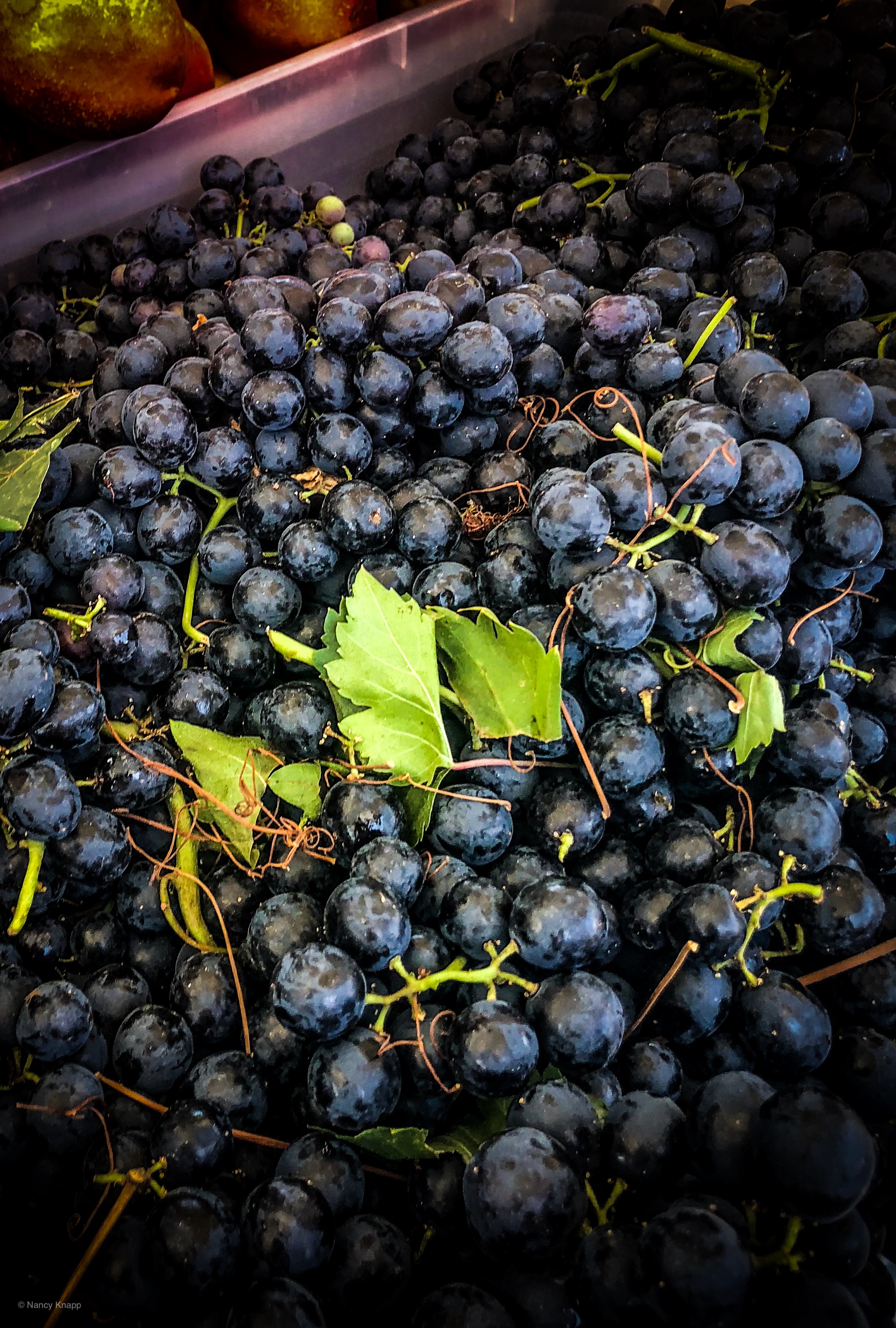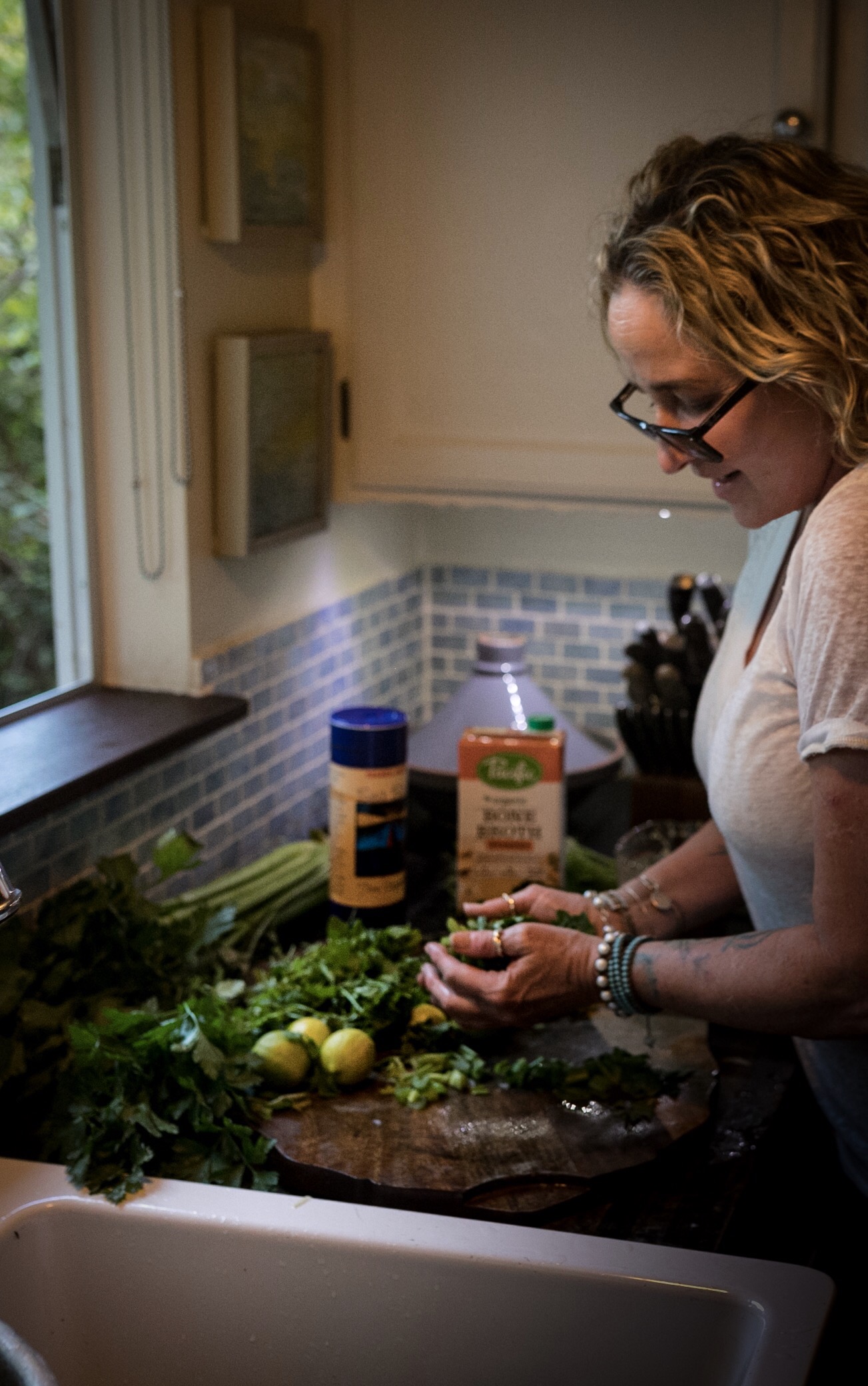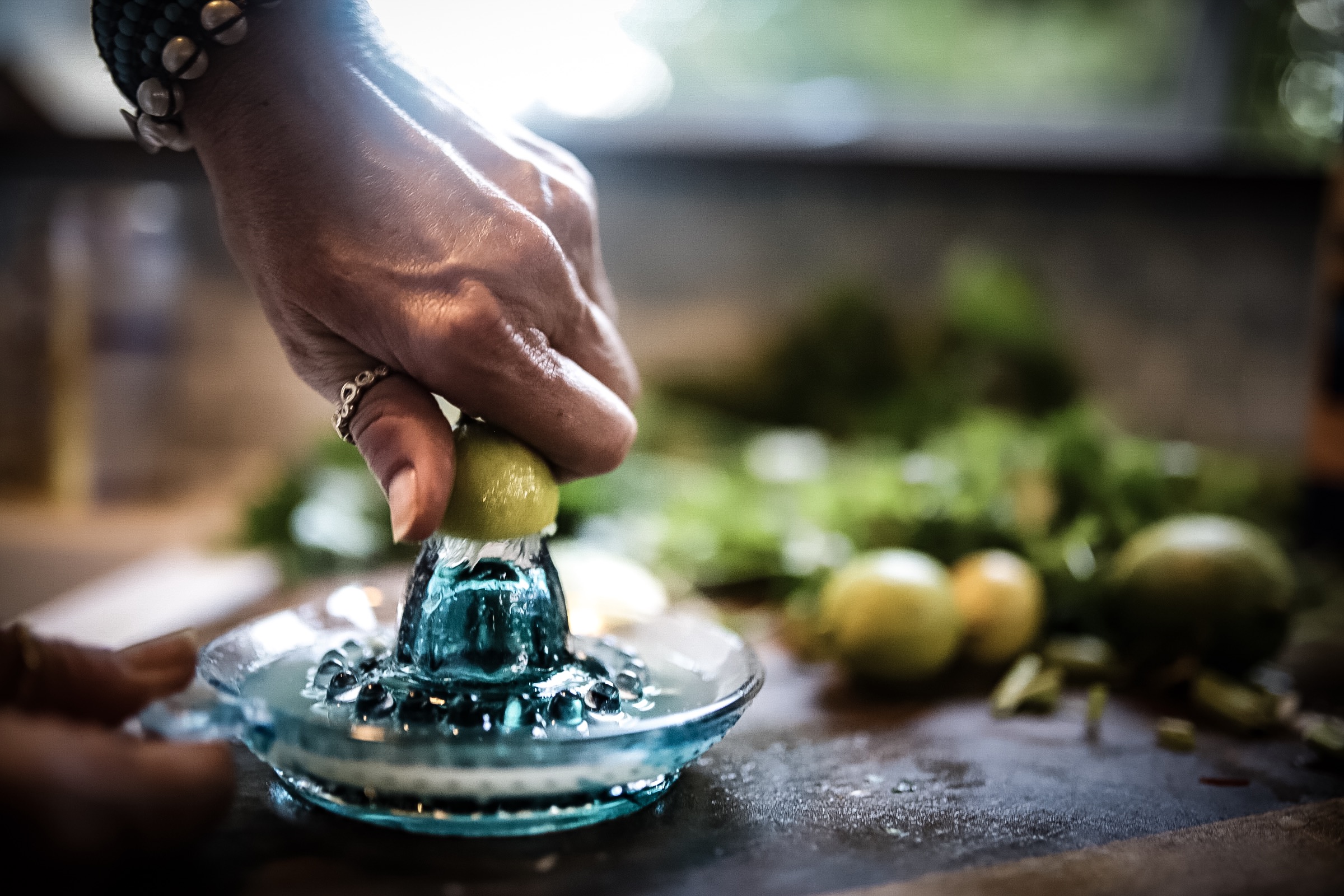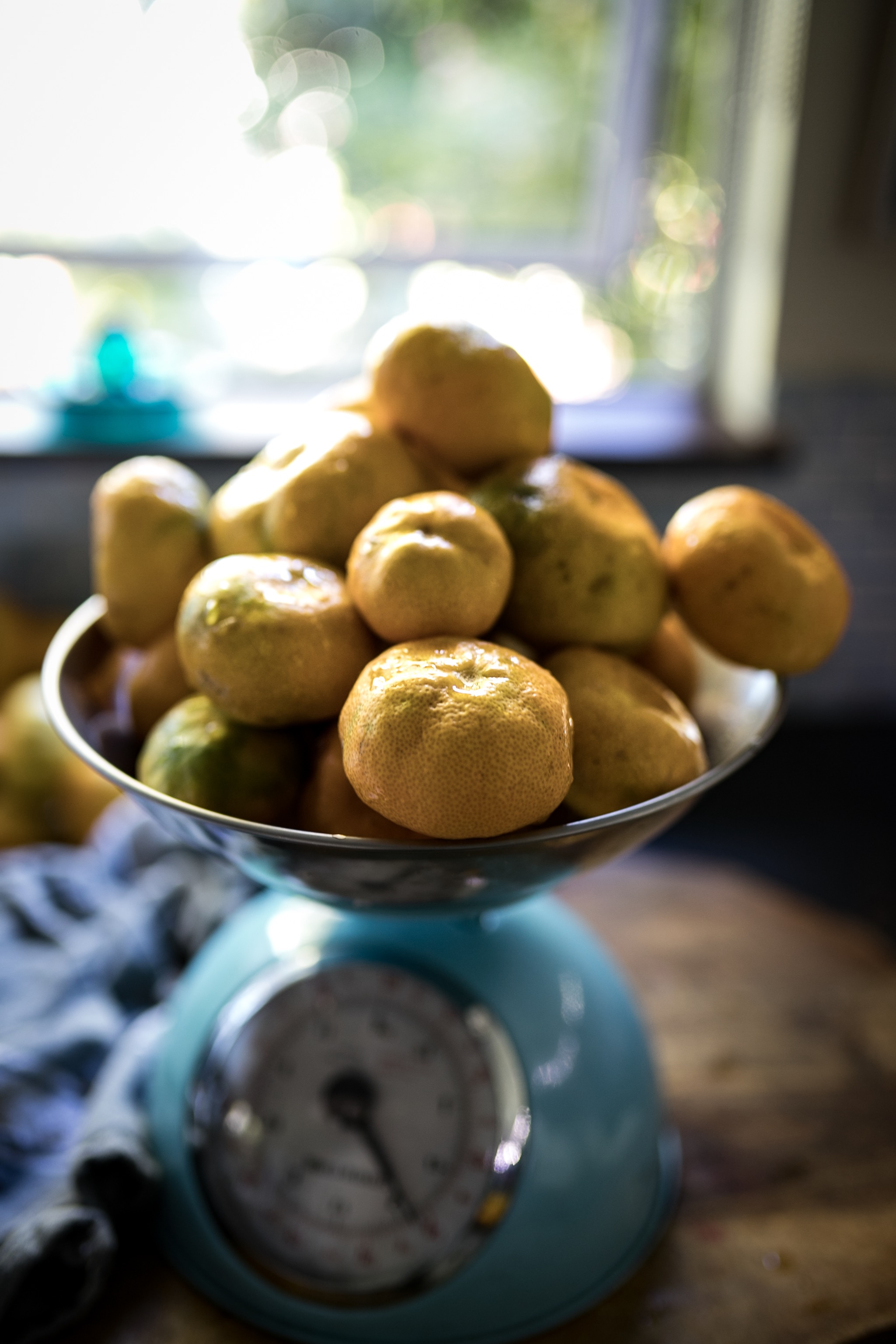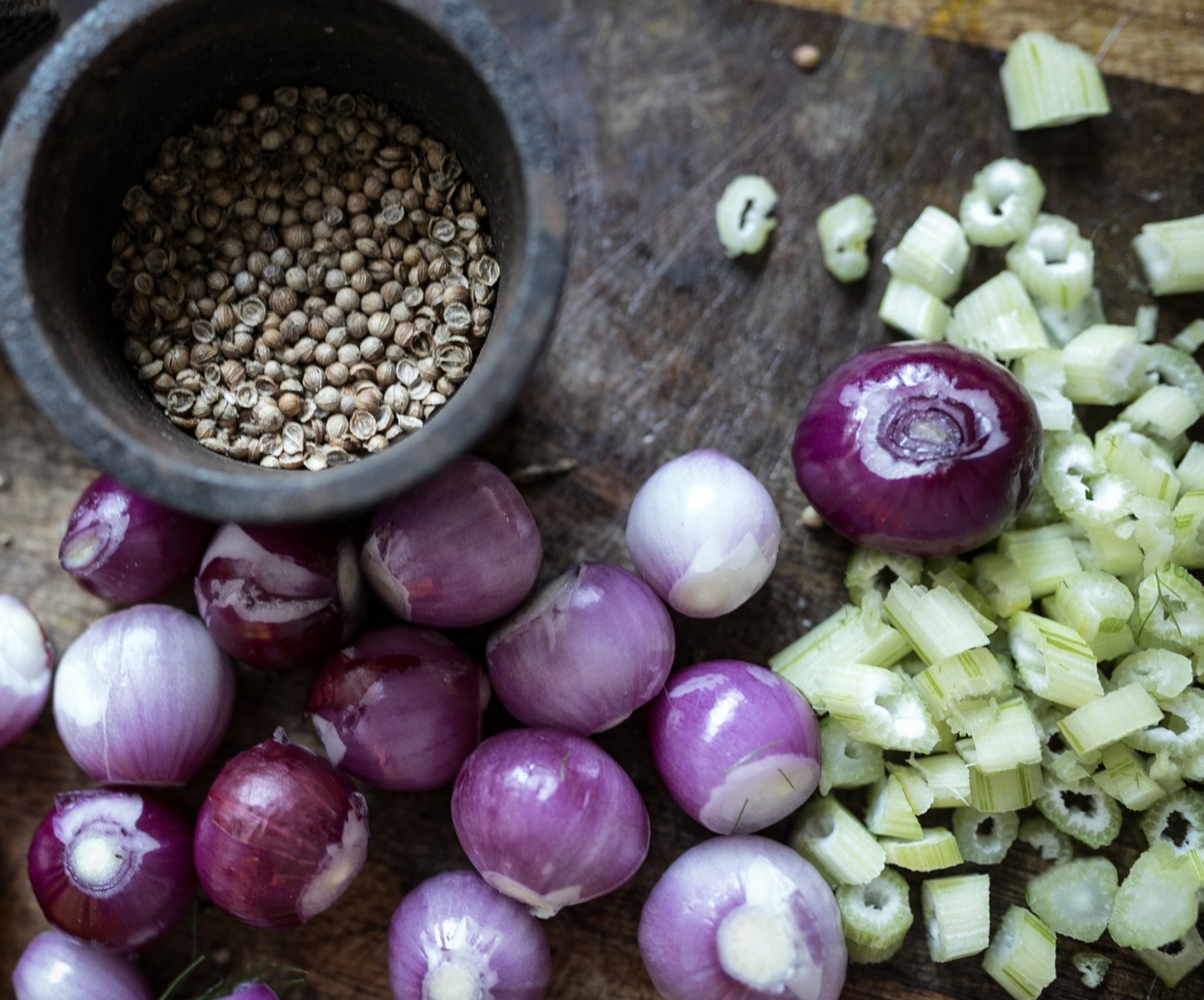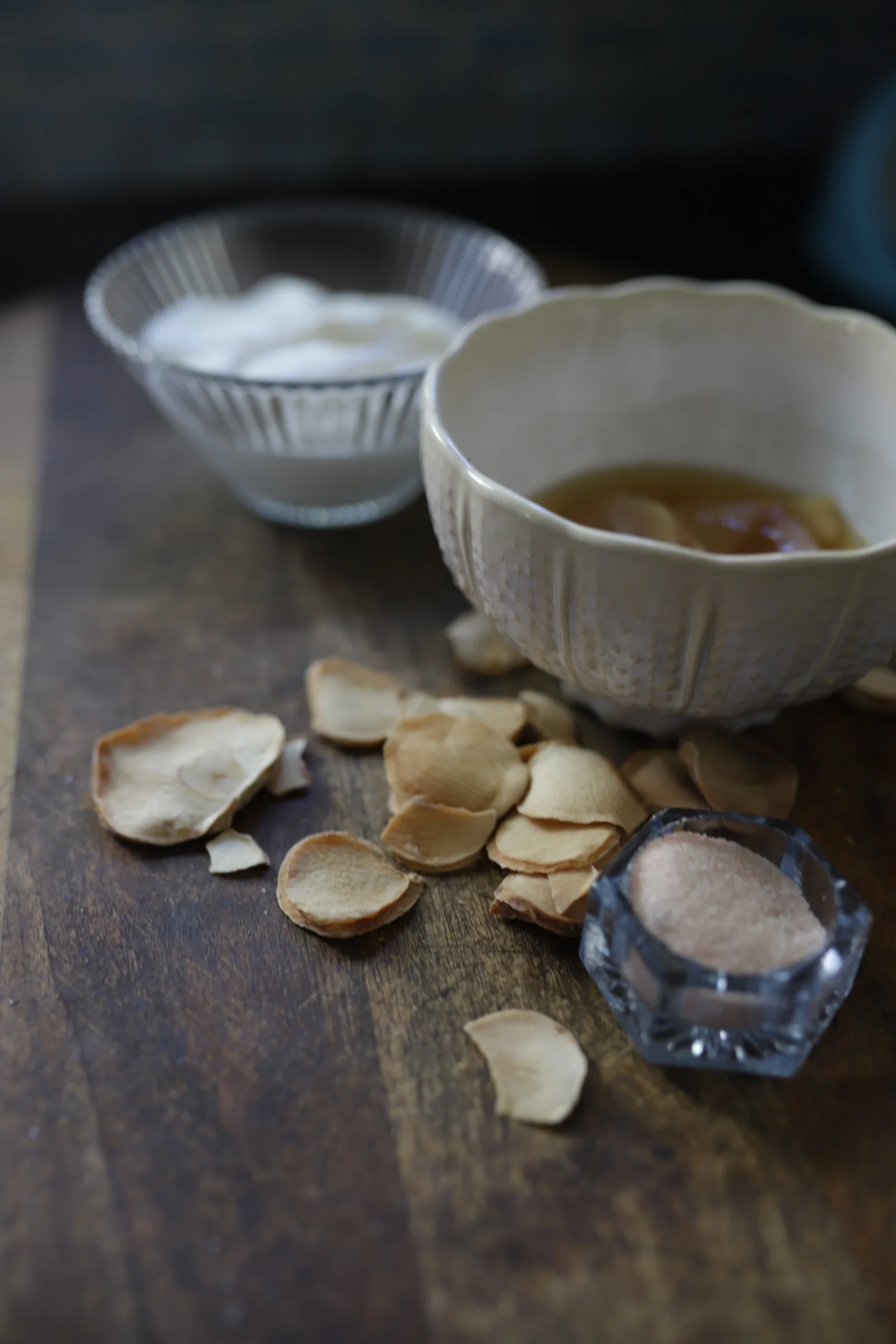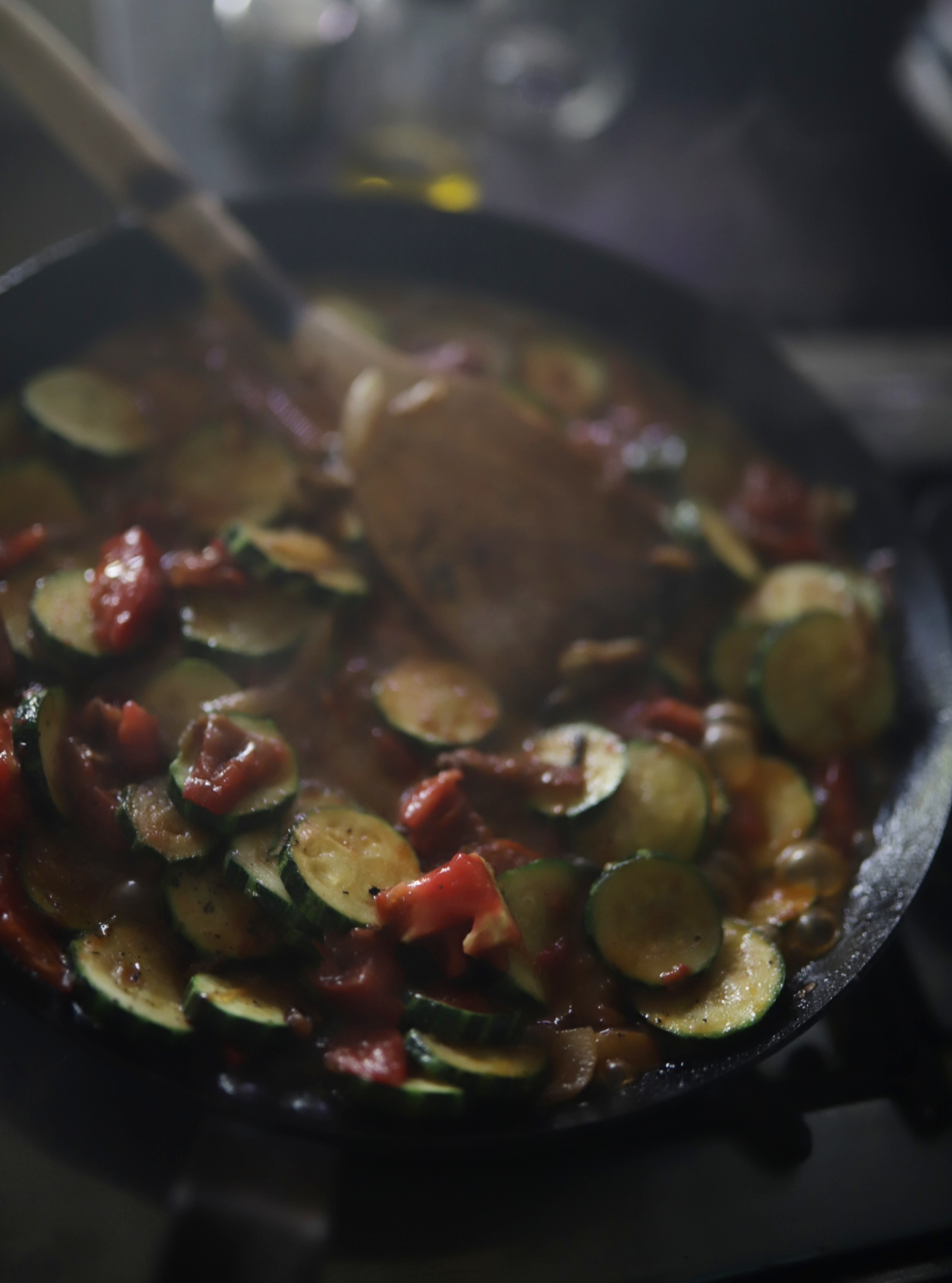Rustic Tomato Tart with Mustard and Tomato Leaves
Summer Desserts: Fruity Clafoutis or, Cherries Are Not the Only Fruit
Cherry Clafoutis is the bomb, but Apricot-Grape is maybe even better!
Apricot Peach Clafoutis
I made a few cherry clafoutis this summer, but then I couldn't find any cherries at the farmers market.. However, there were lovely tart firm apricots and small purple almost black grapes - maybe early Concords - that also had a pleasing bite.
I started off with a fantastic recipe for a more traditional Clafoutis from The Smitten Kitchen https://smittenkitchen.com/2007/07/cherry-clafoutis/ and then adapted it to use different fruit and a slightly more custardy version of the batter, with less wheat flour and honey instead of sugar
So here goes Apricot-Grape Clafoutis!
INGREDIENTS & RECIPE
5 good sized apricots, nice and tart if possible, halved with pits removed
1 big bunch, or about 2 cups of small dark purple early grapes, such as Concords, de-stemmed and whole
2 duck eggs, one big goose egg (if you can find) or four regular eggs*
3/4 cup honey
1 cup of half & half or whole milk
1/2 cup flour
1/2 cup almond flour
8 tablespoons salted butter
1/2 teaspoon fine sea salt
1 teaspoon vanilla
Optional: 2 tablespoons Apricot or Cherry Brandy.. You could also raid the liquor cabinet and just experiment
Optional: Caster sugar for caramelizing the top
* It’s really worth looking for the duck eggs, or even one big goose egg, usually available at a good farmers market! It adds so much to the creaminess of the custardy bit.
Melt butter and pour about a tablespoon of the melted butter to the 9-10” baking pan, making sure sides and bottom are thickly coated. Reserve the remainder.
Add halved apricots, cut side up, and grapes to buttered pan.
Using an electric hand mixer, beat eggs and honey until slightly lighter in color.
Beat in the rest of the melted butter and then add the flours and salt, continuing to beat til smooth.
Add in the vanilla, milk or cream, liquor, and beat a bit more til everything is nicely incorporated.
Pour the batter over the fruit and put into a preheated 375° oven for approximately 25 -35 minutes.
Remove pan from oven when the custard is just set and the edges are brown.
Optional: Let cool for a few minutes & sprinkle with caster sugar, then use a kitchen torch to brûlée as you would a Creme Brûlée.
THESE are the grapes! Not too sweet, a little sour and even tannin-y.
Look at that custardy-cakey goodness!
Two pairs made in heaven: apricots & grapes; basil & tomatoes
Pozole: Or, What To Do With The Rest Of That Pork Belly Braise
I love this soup!
How about some thing that isn’t pumpkin or cinnamon, that’s warming but not too heavy, that’s luxurious but not too rich.. try this spectacular soup! It’s roughly based on pozole, which is a Mexican soup, usually with a pork base, various veggies, and pozole or hominy.
Hominy/pozole is simply field corn that has been dried and treated to a lye bath. The thought is that thousands of years ago, perhaps wood ash - a natural alkaline, or lye, combined with corn during cooking and produced corn kernels that swelled up, lost their hull and become softer. The process created a corn that stored longer when dried and had more accessible nutrients, as well as allowing to be formed into a dough, masa.
This is what all corn tortillas, grits, and anything made with masa come from, much to our enjoyment. If you can find hominy dried, you can prepare it much as you would beans, or buy it canned, which on my opinion, is absolutely delicious. However, never having never make it from scratch, I may not be the best judge!
This pozole has the satisfying fat from the pork braise along with some additional pork short ribs for good measure. It’s full of vegetables, lime juice & cilantro. You can top it with pretty much anything along the lines of sliced crisp radish, chopped avocado, green onion, more fresh cilantro.
Left over pork belly braising liquid and veggies, ready to go along with the hominy
Fresh garden ingredients
Ingredients & Recipe
Serves 4-5 as a main course
If you make the pork belly braise recipe I’ve included in this blog, you can reserve half to 2/3 of the veggies and all the liquid to use as your base for the soup. Personally, I think this is the best of both words, as you can serve the pork cut into chunks as an appetizer, or as tacos, or whatever you like really, then you get an easy second meal with this soup using the extra veggies and braising liquid. Additionally, the two step process creates an incredibly flavorful and nuanced soup base.
If you are really pressed for time, you could just cook up the veggies & seasonings in some pre-made stock, let them simmer for a while and then move on to the Pozole recipe using this..
Or you can make the simplified version of the braise below:
For the Braise
1 lb piece of pork belly, fat side scored, thoroughly salted & peppered
2 lb mixed root vegetables, such as beet, celery root, carrot, etc roughly chopped in large pieces
1 medium onion, roughly chopped
3 cloves garlic, quartered
2 teaspoons crushed coriander seed
1 bottle of beer
Up to 2 cups of orange or tangerine juice and additional water to cover pork while braising.
Salt & pepper to taste
-In a braising pan, brown the salted & peppered pork belly very well, drain off almost all the fat that had been rendered. You can reserve this fat for sautéing the pozole ingredients later, if you like.
-Add crushed coriander seed, chopped garlic & onion, a bottle of beer, and top up with juice/water to just cover the pork. Put the lid on the pan and pop into a 300o oven and braise for about 2.5 - 3 hours, topping up with water/juice as needed to keep the braising liquid almost covering
-About an hour into cooking about add the large pieces of vegetables
-Remove from the oven when the pork is fork tender
-Remove the pork and set aside to add to the soup later. Save liquid and veggies - you should have at least 2 cups or more of the braising liquid. As it cools you can skim off the fat that will rise to the top.
For the Pozole
1 lb St. Louis style pork ribs, cut into 2 ribs each. If you are just using the veggies and leftover braising liquid, increase this to 2 lbs.
1 cup celery and with the leaves too if you have them, chopped
1 large onion, chopped
3 cloves garlic, chopped
1 teaspoon cumin, ground
1 cup fresh cilantro, roughly chopped
1/4 cup of fresh oregano, chopped
1 medium jalapeño, or the equivalent of other varieties of chilis
32 oz container/4 cups of veggie or chicken stock and additional water as needed
25 oz can/2 cups of hominy
6 juicy Mexican limes, or three juicy regular limes, juiced, with a few extra ones cut into wedges for serving
2-4 cups reserved braising liquid from pork belly
Vegetables reserved from pork belly braise
Salt and pepper
If you are using the braised pork belly, cut into bite sized pieces, not too small or they will disintegrate
For the toppings: Fresh lime, chopped cilantro. chopped greens such as radish tops or mizuna, chopped avocado, chopped chilis, slivered cabbage, crema fresca, crumbled cojita cheese...
- In a large soup pan, brown the salted and peppered rib meat sections in olive oil or a little of the reserved pork fat.
-Add chopped celery, onion, jalapeño, garlic and cumin to pan with ribs and cook til the veggies are just soft
- Add the reserved braising liquid, oreganaand about 1/2 the stock then cook at a simmer until the rib meat starts to become tender, approximately 45 minutes to an hour.
-To this soup base, add the chucks of pork belly (if you are using), the reserved veggies, the cilantro, the hominy, the rest of the stock and half of the lime juice and cook for another 1/2 hour until everything melds together.
Serve with a good squeeze of lime, and toppings of your choice, such as chopped avocado, fresh cilantro, chopped mizuna greens (my choice!) thin, slivered radish, or anything along those lines!
The pork ribs, cut into twos
Chili peppers, oh yes please
Nicely browned ribs
Make a big batch because I promise it will all get eaten
Squeeze most of the lime and leave some to cut into wedges as a garnish
Pozole Soup, topped with fresh cilantro, mizuna , and lots of lime!
Mediterranean: Kale with Anchovies, Capers & Garlic In Labneh
Dig in!
If you are suffering from a kale overload (production can get a little out of hand even in a home garden this time of year) and have run out of inspiration for ways to cook it, here is another option that you might want to try.
Curly purple kale fresh from the garden
Lightly cooking the kale with wonderful savory ingredients that you most likely have in your cupboard or fridge right now is great, but adding that mixture to labneh takes these ingredients to a whole new level.
This is Turkish labneh
First off: Labneh is a thickened yogurt or yogurt cheese typically found throughout the Middle East. It’s pretty readily available these days, but if you are having a hard time finding it you can make it by simply straining thick, full fat Greek cow, sheep or goat milk yogurt in cheesecloth over a bowl for a day or so until enough liquid has drained out that it has more of a cream cheese consistancy. In fact you can even buy purpose made yogurt strainers online if you think you will be doing this often. Personally I like the flavor of the sheep milk labneh, but no matter what kind, these days I often prefer it over Greek-style yogurt in cooking as it adds another dimension to dips, sauces, marinades or even baked goods. In fact, I have been known to add it to tuna fish salad..
You will be giving this dish and instant umami boost by sautéing anchovies, capers and garlic first along with chili flakes and then adding the chopped kale to this mixture (I took my inspiration from a Melissa Clark recipe) but that to me, though tasty, was in need of a something cooling and creamy.
One of the holy trinities of cooking: Capers, garlic & anchovies
That’s where the next player comes in.. enter labneh. Once you have that delicious savory kale mixture ready, add some citrus juice, chopped nuts, chopped fresh herbs and fold into the labneh. It’s instantly transformed into a fresh yet rich dip or side dish that works well with anything grilled, or even on top of a baked potato.
Here, with toasted, roasted garlic sourdough fingers
Ingredients & Recipe
Makes 3-4 cups
5-6 cups fresh kale, chopped into strips - this can be pretty quickly chopped, not too fine. If the stems are too tough, cut them off otherwise, slice those parts thinner
5 cloves garlic, roughly chopped
6-8 anchovies - Use the good ones, usually Italian in a glass jar. It makes a huge difference!
1 tablespoon capers, heaped
1 teaspoon chilli flakes, or a fresh or a small fresh chili chopped if you have handy
3 cups labneh or Greek-style yogurt
1 lemon and/or a couple of optional tangerines, juiced
1/2 cup pecans or walnuts, coarsely chopped
1/2 cup lovage and/or Italian parsely, chopped
Salt to taste
Water as needed
Olive oil for cooking
-Chop the kale, garlic and nuts as directed above
-Add a couple of tablespoons of olive oil to a preheated sauté pan.
-Gently sauté the garlic, anchovies and capers and some until they are lightly golden brown - the anchovy will kind of disappear, which is fine.
-Add the nuts towards the end of cooking the above step just to bring out their flavor a bit
-Add the chopped kale to the pan with a few tablespoons of water and cook until softened but still a nice green, approximately 5 minutes - you still want some texture left in the kale. Check the seasoning at this point - the anchovies and capers are pretty salty, so you may need to add only a little salt
-Squeeze in the citrus juice and toss in the chopped lovage and/or parsley, stir & then take off the heat
-Put the labneh in a mixing bowl and after the cooked mixture cools a bit, add it to the labneh and mix well. Check for salt again and add to taste. Transfer the finished mixture to a serving dish and top with lots of chopped parsely and a drizzle of really good olive oil too, if you like.
Sauté capers, garlic & anchovies no darker than this please!
Winter Fresh: Mizuna Pecan Pesto
After all the excesses of Thanksgiving past and before the Christmas indulgences begins, you might want to give this lovely pesto a shot. It can be tossed into a pasta, or over vegetables, used as a dip with crudités or a salad dressing base, slathered on crostinis or sandwiches... Actually, you can do pretty much anything with it!
Mizuna is a great Asian winter green to grow, cold hardy down to about 15 degrees. You can sow it like lettuce and then harvest as a cut & come again crop. If you can't grow it right now, then it's often available at Asian markets, or sometimes as a bagged salad. If you absolutely cannot find it, then you can use watercress, but the flavor will be quite a bit stronger.
This nice thing about these greens is that they are gently spicy with a delicate flavor that tends not to overwhelm other ingredients as a more in-your-face traditional basil pesto might.
I added some fresh grated horseradish & ground black pepper to complement the pepperiness of the greens, and pecans because they have that inherent sweetness that I think works well with the flavor profile of the Mizuna. I also incorporated a squeeze of fresh lemon for the brightness.
Other than that, it's pretty much the standard pesto ingredients: Parmesan cheese, garlic, good olive oil and sea salt.
Yum pecans and parmesan - a nice flavor combo
Garlic is imperative here, but if you want a little less intense of a pesto, add only two cloves
This recipe will fill a one pint jar. It can be refrigerated for a few days, if it lasts that long!
Ingredients & Recipe
1 large bunch Mizuna leaves, about 4-6 oz, stems and all
1 cup pecans (I prefer to start with pecan halves)
1 cup finely grated parmesan cheese
3 cloves garlic
1 teaspoon freshly grated/microplaned horseradish root, or to taste
1/2 teaspoon fine sea salt, or too taste
Freshly ground black pepper
Juice of half a lemon
1-2 cups extra virgin olive oil
Rinse and dry the Mizuna leaves then roughly cut into a few sections. Leave on the stems as they are also good to eat!
Combine about two thirds of the greens with the pecans, parmesan, garlic, black pepper and horseradish in the bowl of a food processor fitted with a blade. Then whirl everything together, pulsing as needed, until all the ingredients are fairly finely puréed.
Next, to the food processor, add the rest of the greens and the squeeze of lemon then process the mixture as you slooowly add the olive oil through the hole in the top, creating a slight emulsion.
Add enough olive oil so your pesto is creamy and smooth, just enough to bind the sauce. For some applications, you might want the pesto a bit thinner, so add a bit more oil. If you want a thicker sauce, so it's more spreadable, add a bit less oil. Either way, the oil is there to create a nice smooth integrated sauce, not a slick, so go slowly.
Taste and add salt to your preference, then one final spin in the food processor to bring everything together. And that's it!
Here is a pretty good all-around consistancy for the pesto
Enjoy!
Sumptuous: Tangerine Coriander Braised & Crispy Pork Belly with Winter Veg
Shown here served as a starter
What I love about this dish is that though it’s a very slow cook, you can pretty much walk away from it for most of the time. Better still, I made this the day before and did the final 1/2 hour crisping the next day before a dinner party, to use as a starter. And that part was truly easy.. just put the braised, tender pork belly and veggies on a baking sheet with some tinfoil, pop in the oven for 20 minutes or so til crispy and browned, cut the veg and pork into bite sized pieces put on a pretty serving dish et voila, starter is served!
Coriander seed and fennel are a match made in heaven, or wherever good food comes from..
Many, many tangerines!
The richness also led to the citrus aspect, the fresh-squeezed tangerine juice. And that in turn inspired the crushed coriander seed, which has its own lemony note. The tangerines I have coming out of my ears this year, so I had also made some marmalade of them with Serrano peppers, & I actually added a bit of that too. And the coriander was collected from by cilantro plants that had gone to seed - so much more aromatic.
I like to use as much as possible of the vegetable. I chop up the stems and leaves of the fennel here and add to the braise early on as by the end, these will dissolve, flavoring and enriching the braise.
Lots of s&p on that meat!
I think you could use almost any root vegetables in this dish. I like the sweetness of beets, the celery flavor that celeriac imparts while still holding up to a braise, and fennel root for the perfumed flavor that complements everything. The one thing I stayed away from was potatoes, because the pork belly is so utterly decadently rich that I wanted something in the braise that lightened things up a bit. But I could see some potatoes on the side, either as a light mash, or boiled with a little butter, salt and chives.
Here it is all nicely browned and ready to go into the braise
And into the braising liquid!
Serves up to four as a main course, or six as a starter
Ingredients & Recipe
2lb piece of boneless pork belly, whole
2 large golden beets, peeled & cut into about 8 wedges
1 largish celariac (celery root), peeled & cut into about 8 wedges
1 head fennel with stalks & leaves. Strip away the most exterior covering on the fennel root & cut into about 8 wedges; stems, chop fine, along with the ferny leaves
1 cup of red pearl onions, peeled and whole
2 cups of fresh squeezed tangerine juice with the bits or a combination of juice and tangerine marmalade, if you like
2 bottles of beer, something rich but not too bitter - I used a decent Weiss beer, but a spicy darker beer would work well too
Water as needed
Sea salt & ground black pepper
2 tablespoons of crushed coriander seeds
1 tablespoon of oil for cooking
1/2 cup chives, chopped fairly fine for garnish
-Pre-heat oven to 350 degrees
-With a sharp knife, score the fat on top of the pork belly with diagonal cuts in two directions about 1/2” apart to form a crosshatch or diamond pattern. Cut all the way down through the fat, stopping at the meat. This is easy with a sharp knife and has the added benefit of making you feel very chef-y 😉
-Liberally salt and pepper the pork, getting into those grooves as much as you can
-Heat up an braising pan with a lid big enough for the whole piece of meat ( I used a 5 qt Le Creuset braiser) & add just a splash of oil to pan. Brown the pork, fat side down, until nicely colored, then do the same with the other sides
-While the pork is browning, prepare the vegetables as above
-Remove the nicely caramelized pork from the pan and drain off almost all of the excess fat, leaving a couple of tablespoons. Um, I saved the fat to brown some rabbit in because rabbit and that bacony flavored fat = goodness!
-The coriander, the red pearl onions and the chopped fennel stems/leaves go into the pan to get sautéed for a little color
-The pork then goes back into the pan fat side up, along with the beer, tangerine juice and enough water to bring the liquid level up to the pork fat. I also added about half of the celeriac at this point to cook in the braise for flavor
-Once this mixture is at a simmer, cover the pan with lid and put into the oven. Braise for approximately 2.5 hours, then adjust as needed for salt & add the remainder of the veggies to the pan - beets, celeriac and fennel. Braise for another 1 to 1.5 hours, until the pork is tender and fork soft
At this point you can go one of two ways:
1. Remove the pork and vegetables from the pan and reduce the braising liquid on the stovetop until it creates a rich sauce, skimming the fat. Put the pork, fat side up, and the veggies on a baking sheet lined with foil then place into a hot oven, 400-450 degrees, for 20-30 minutes until the fat is crispy and the vegetables are nicely browned and getting crispy. Then add everything back into the pan with the reduced braising liquid. Sprinkle with lots of chopped chives and you can serve from the pan with whatever sides you like, maybe some crusty bread to soak up the braise sauce.
OR
2. Remove the pork and about half of the veggies from the pan and reserve the liquid with remainder of the veggies for an amazing soup (recipe to follow!) and then place the pork, fat side up,the beets, fennel & celeriac on a baking sheet lined with some foil. Place into a hot oven, 400-450 degrees for 20-30 minutes until the fat is crispy and the vegetables are nicely browned and getting crispy. Remove from oven, cut everything into bite-sized pieces, sprinkle with lots of chopped chives & plate on a pretty serving dish. This method works well for a starter.
Normally, with this kind of dish, you might crisp up the meat at the end separately and reduce the braise then re-combine the meat and the sauce. Because I wanted to do this as a starter, I crisped the pork and some of the vegetables together without the braising liquid, which I reserved along with some of the veggies for a delicious soup. A good way to get two meals from basically one prep...but that’s another post!
Autumn in a Spoon: Pumpkin & Apple Butter
Savory Yogurt Deliciousness: Mast'o Mousir
Acorn Squash: Go Stuff It!
ALL those squashes and pumpkins we are seeing right now are not just for decoration! Acorn squash is such a simple, tasty vegetable, or technically, cucurbit, to cook just roasted with a little olive oil, butter, salt & pepper. But, this recipe takes it to a whole new level! Scroll down, complete recipe at end!
Acorn Squash and Zucchini
FIRST off, roast a halved acorn squash and drizzle with a little olive oil until it develops some color and is fork soft, about 20-30 minutes in a 350° oven. I cut it in half widthwise to get that pretty scalloped shape. You can cut the stem end off to create a flat base.
I got a little carried away with the roasting - but as Gordon says, color is flavor, right?
WHILE the squash is roasting, get to work on the stuffing! Slice zucchini into 1/2" rounds, and chop the garlic, onion, fresh herbs, tomatoes & chilis if you are using. Lightly brown the onion & garlic & optional chilis with some olive oil and a dollop of butter, then add the zucchini and get that just very lightly browned.
The fresh herbs I used were from my garden. I love the tarragon with the lovage & parsely. If you don't have lovage, you can use celery leaves instead.
Dollop of butter for flavor as often as possible!
NOW add in chopped tomatoes, the chopped fresh herbs and a splash of maple syrup and simmer for a few minutes, to meld the flavors and reduce the liquid so it's not too liquid. The maple syrup is just to give it a hint of sweetness and maple goodness that complements the acorn squash, so don't go overboard.
AND get stuffing! Put the acorn squash halves in a pretty baking dish and fill them up with the zucchini mixture. If you have a little too much, just put it in the bottom of the dish - don't worry, it will get eaten.
Finally, top the stuffed acorns with a generous amount of chopped pecans (to add some really nice texture plus that lovely flavor) and add pieces of cheese, then put back in the oven for about 15 minutes to allow the stuffing juices to mix with the acorn squash and the cheese and pecans to lightly toast.
Ready for a final visit to the oven to melt the cheese and toast the pecans.
Ingredients
1 - acorn squash, about 2lbs, cut in half widthwise
4 - medium zucchini, sliced into 1/2" rounds
2- medium tomatoes, chopped
1 - onion, chopped
2 - garlic cloves, diced
2 - hot chili peppers, small, optional
3 tablespoons of butter
Olive oil for cooking
Salt & pepper
About 1/2 cup total of equal parts chopped Italian parsley, lovage and tarragon
About 1/8th cup of maple syrup, or just a quick glug into the pan to taste
About 1 cup of pecans, coarsely chopped
About 1 cup of chopped or chunked cheese - I used Syrian cheese, which is a fresh cheese that is delicately flavored, and melted nicely without too much stringiness. I do think the simplicity &creaminess of the flavor worked well with the warm, luscious-tasting veggies, but you could substitute something similar
-Preheat your oven to 350°
-Cut the acorn squash in half width-wise. Drizzle with a little olive oil and roast in a the preheated oven for 20-30 minutes, until it is fork soft and some caramelization is happening
-Chop the zucchini, onion, garlic, tomatoes and fresh herbs
-In a frying pan, heat the olive oil & sauté the onion & garlic until lightly browned, then add the zucchini and lightly brown that - keep some texture to the zucchini as we don't want a slimy mess! Add a knob of butter to melt into the mixture.
-Add the chopped tomatoes to the pan along with the maple syrup and fresh herbs and simmer a few more minutes to blend the flavors.
-Place the acorn squash halves in a baking dish and fill them up with the zucchini mixture. Generously top the stuffing in each squash half with chopped pecans and dot with the cheese.
-Return to the 350° oven for about 20 minutes to brown the pecans and melt the cheese. Cover with a bit of foil if the nuts and cheese start to get too brown as you also want to allow the flavors of the squash and stuffing to start to blend together.
ENJOY!



